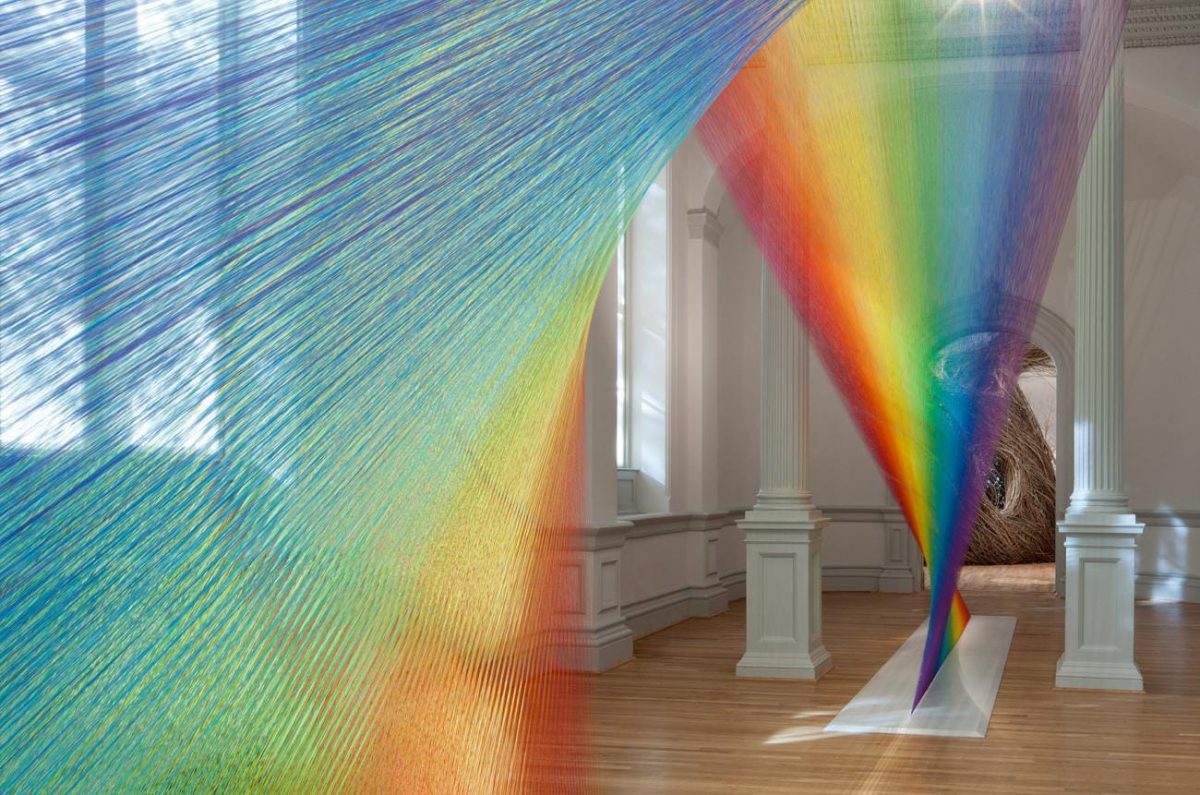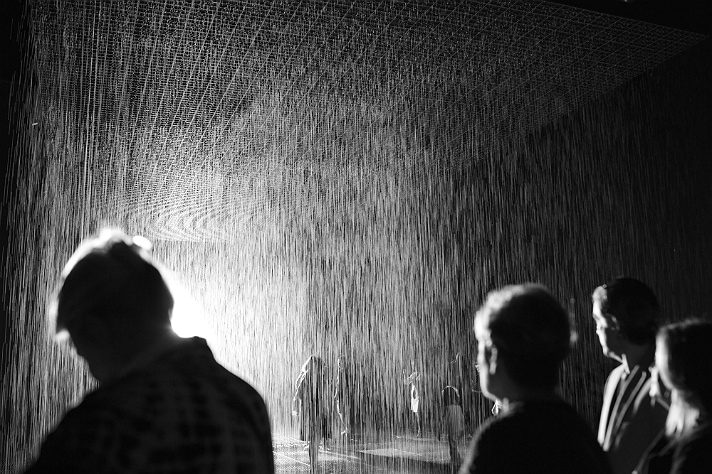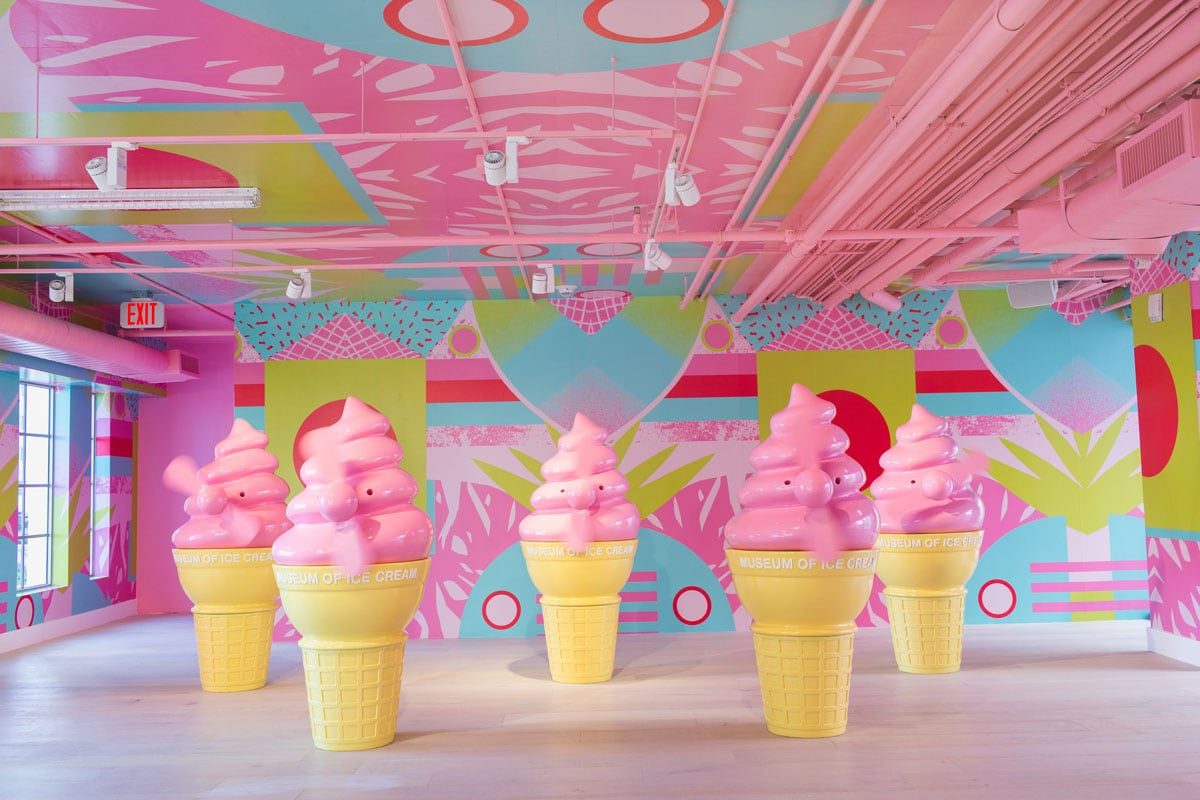The Age of Art For Instagram
The age of made-for-Instagram exhibits says something about our culture, however, it didn’t start in places like Happy Place. It more likely started in nature and in restaurants and spilled its way over in modern culture. Artist like Yayoi Kusama created installations prime for the age of art for Instagram long before cellphone towers and hashtags dominated the airwaves.
An example of Instagram gold was the 2015 experience called Wonder. Placed in the Renwick Gallery at the Smithsonian the art experience featured nine contemporary artists. One room featured a prismatic rainbow made from 60 miles of thread. Another room was wallpapered with dead insects. In another, 10 towers of index cards stacked and glued together loomed over visitors like volcanic rock formations.

Becoming a sensation on social media, Wonder was able to bring more visitors to the Renwick. The museum encouraged this. Curator Nicholas Bell told the Washington Post at the time: “We’re all flabbergasted, to be frank. I wonder, what are they even trying to say? ‘I am here Instagramming?’ It’s like this new first-person narrative of the museum experience. I’m fascinated.”
Ready Made Installations
Three years earlier, the Rain Room opened at London’s Barbican Center. The installation would travel to the Los Angeles County Museum of Art, New York’s Museum of Modern Art, and all over the world. However long its tenure in those museums, it remained the longest on Instagram. Where there are thousands of photos of it.
While the Rain Room initial intent was not social media, its unparalleled success online demonstrated a need for these types of exhibits. In some cities, people waited in line for as long as eight hours for their chance to get a photo inside. Proving there is a market waiting to be served.
According to Jia Jia Fei, Director of Digital at the Jewish Museum of New York, “The world has seen an increase in these spectacle exhibitions that have really taken on a new dimension online”. Delivering a TED Talk last year on Art in the Age of Instagram. “When you think of the very Instagrammable exhibitions of the last five years—the course in which Instagram has existed—you think of Yayoi Kusama and her Infinity Mirrored Room. These are artists who really have very critical bodies of work, but [created installations] that have taken on new meaning because of social media.”
Smoke and Filters – Art for Instagram?

“Rain Room” | Photo courtesy of rAndom International
Is there though a line between Instagram filler and art? What differentiates the psychedelic paintings of the abstract movement, like Mohammed Melehi from a room designed to delight the senses like in Jared Paul’s Happy Place?
“Artists like Sol LeWitt also have, in their practice, very intricate colorful walls,” says Fei. “Without that context, one might consider that to be as created for Instagram. There is a nuance in an artist’s practice. It’s about minimalism and a period in time in which that work was created. If it’s just an orange wall that exists as a backdrop, there’s no meaning or value added to having that space there.”
Some critics draw a harder line in the sand. “These manufactured entertainments aren’t significant art exhibitions any more than a Chuck E. Cheese arcade or the Block of Fame at Legoland,” says Christopher Knight. He is an art critic for the Los Angeles Times. “They’re just snobbier.”
Pop Commercialism

Each of the goals of these spaces is as different as the artist behind them. The museums that host their work are there to ask questions, provoke thought, explore space, and add a sense of amazement. However, the aims of these recent installations like the ones at the Museum of Ice Cream are further complicated by commercialism. Many of the rooms are sponsored by brands. However, the limit to which these brands impact the experience differs by location.
Ferney the creator – claims that experiencing a place through selfies goes far beyond the spaces she and others have created. “I go to SF MoMA and everyone’s just trying to get Instagrams,”. “Is that what art is becoming—what you’re experiencing and sending out into the world?”
Visiting a museum in the 21st century is not a place of quiet contemplation. Where one can simply see art, today we document and replicate it. Fei says in her TED Talk, “In the pre-digital photography era, the message was: This is what I’m seeing. I have seen. Today, the message was: I was there. I came, I saw, and I selfied.”
Perhaps we should reflect on the experience that we get out of these spaces; rather than if they’re artistic or not. Do they make us think? Is the mind’s eye expanded somehow by these shared experiences? Or simply does experience that you take from these creamed colored daydreams add value to our lives, instagrammable or not.